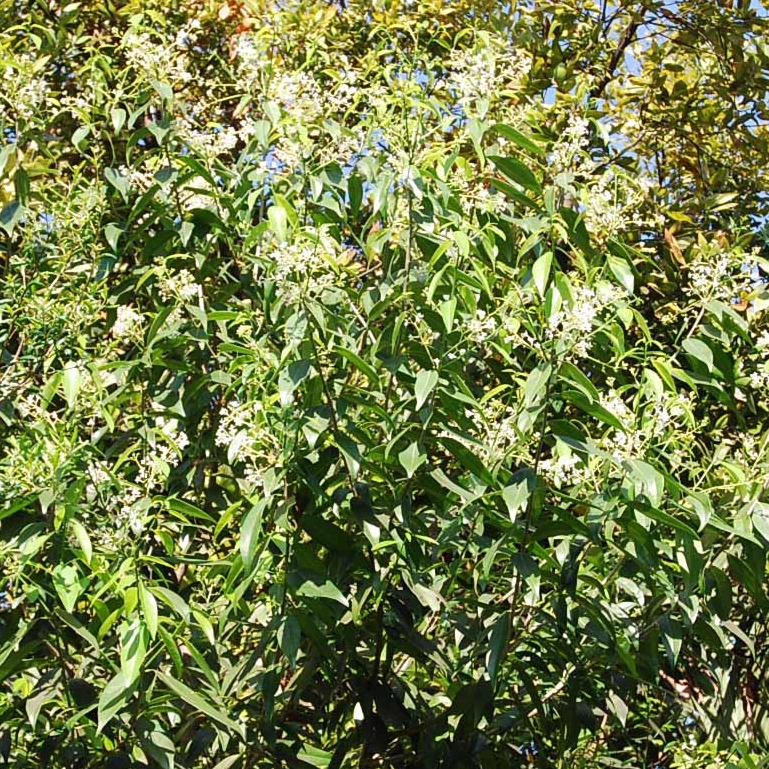
Lancewood
Nectandra coriacea
Lancewood is a small tree with six inch lance shaped leaves that tolerates deep shade until the canopy opens and sets it free to reach 30 feet or more in height. Lancewood’s spread is about the same as the height and is perfect for shady areas of the yard or to provide shade in a small area.
The fragrant white flowers are followed by a one inch oval fruit that is attached to a yellow or red cup, making this a very attractive tree when in fruit. This fruit is a small avocado, which it is related to along with Redbay, that attracts birds and squirrels. The leaves have a spicy aroma with a short curved petiole that helps in identifying this plant.
Lancewood can be found naturally from the Keys up to Volusia County along the coast. It grows back of the dune where it is protected from much salt air and water. This is a tough plant that needs average soil and is drought tolerant once established.
Lancewood is on the list of plants that get the newly established Laurel Wilt Disease which kills Redbays and Avocados. The idea is to hedge our bets and use susceptible plants far from the coast where this disease is spreading. After the disease has killed most of its hosts and diminishes, there will then be a seed source in homeowners’ yards to grow new plants from and reestablish these trees.
A planting of Gumbo Limbo, Paradise Tree, Mastic, Redbay, Live Oak, Black Ironwood, Pigeon Plum, Satinleaf, Wild Tamarind and Blolly mixed with Lancewood will make a very shady yard with no grass and no weeds. Use Marlberry, Wild Coffee, Native Plumbago, Snowberry, Basketgrass, Coastal Foxtail, Boston Fern and Beautyberry to fill the ground. Use wildflowers along the south edge for color.